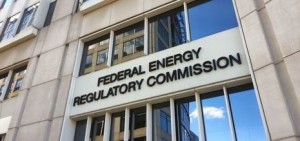Justin Gundlach
Climate Law Fellow
The Supreme Court has turned its attention to the question—really several aspects of the question—of where exactly the Federal Power Act of 1935 draws the jurisdictional line between the Federal Energy Regulatory Commission (FERC) and state regulators. The Court heard oral argument in one case on point on October 14th, FERC v. Electric Power Supply Association, and it granted cer tiorari in another, CPV Maryland, LLC v. PPL EnergyPlus, LLC, less than a week later. Each case would have had significant implications anyway, even if the country were not right now trying to strike a cost-effective balance between the goals of reducing greenhouse gas emissions and maintaining a reliable electricity supply. Coming as they do amid a reformation of the electricity sector, these cases will greatly affect how much of a role FERC can have in shaping the electric grid. Most likely, their effect will be to constrain FERC—given how oral argument went in FERC v. EPSA, and given that the Court granted cert in CPV Maryland despite agreement among the Third and Fourth Circuit courts of appeal that in such cases FERC’s authority should preempt that of the states.
tiorari in another, CPV Maryland, LLC v. PPL EnergyPlus, LLC, less than a week later. Each case would have had significant implications anyway, even if the country were not right now trying to strike a cost-effective balance between the goals of reducing greenhouse gas emissions and maintaining a reliable electricity supply. Coming as they do amid a reformation of the electricity sector, these cases will greatly affect how much of a role FERC can have in shaping the electric grid. Most likely, their effect will be to constrain FERC—given how oral argument went in FERC v. EPSA, and given that the Court granted cert in CPV Maryland despite agreement among the Third and Fourth Circuit courts of appeal that in such cases FERC’s authority should preempt that of the states.
The cases and some of their implications are discussed below the jump.
The Cases
FERC v. EPSA deals with FERC Order 745, which instructed the Regional Transmission Organizations (RTOs) that administer wholesale electricity markets when and how much to pay for a form of electricity curtailment called “economic demand response.” Specifically, the Order said RTOs 1) should pay for demand response when doing so would be cheaper than paying for an additional unit of generation, and, at those times 2) should pay the same price for demand response as they would have paid for generation.
Opponents of the Order argued that FERC had exceeded its authority and usurped that of the states because telling wholesale market administrators to pay retail market participants for demand response amounted to a direct intervention in retail markets—the province of state regulators. FERC and the private parties that supported the Order countered that all effects on the retail market were indirect and that FERC had taken pains to minimize them when crafting the Order. Pro-Order amici also pointed out that demand response is a multi-billion dollar industry, and one that makes it possible to balance electricity supply and demand without turning on—or even building—power plants.
Oral argument suggested that the Court is split along the usual liberal-conservative line on the jurisdictional question. Because Justice Alito recused himself, there is a good chance of a 4-4 vote—a non-decision that would leave the D.C. Circuit opinion’s standing. Regardless what one thinks about Order 745, the opinion below is problematic. As California’s wholesale electricity market administrator, Cal ISO, observed, “the ultimate scope of the D.C. Circuit’s jurisdictional holding is [] unclear.”
CPV Maryland has been consolidated with another Maryland case, both of which address the same questions as a pair of cases originating in New Jersey. These cases all arise from efforts on the part of the legislatures of Maryland and New Jersey to encourage construction of new power plants. The key to that encouragement is a contract that would bind retail utilities and a new electricity generation facility into a long-term power purchase agreement. The agreement would a) direct the generator to bid its electricity into the wholesale marketplace, b) specify a price that the generator should expect to receive, and c) allocate the risk of underpayment to the utilities and the risk of overpayment to the generator.
Utilities and incumbent generators opposed these initiatives in both states. They argued that the states were interfering in a field—wholesale electricity pricing—where Congress had assigned FERC exclusive authority. They also argued that the state initiatives conflicted directly with the Minimum Offer Price Rule that FERC had devised to ensure that incumbents could not keep new entrants out of the marketplace for electricity generation capacity.
The Fourth Circuit decided that Maryland’s program was both field- and conflict preempted. The Third Circuit only found field preemption. Asked for its view, the Solicitor General recommended that the Supreme Court not grant cert. Nonetheless, the Court has granted cert to consider the field and conflict preemption questions anyway.
Some implications
This pair of cases will have a few direct effects, and also some indirect ones.
Should FERC v. EPSA go against FERC, it will reduce the size of the market for wholesale demand response and destabilize that market’s underpinnings besides. This will in turn deprive the wholesale markets of the mid-Atlantic and New England in particular, which rely on demand response more heavily than any other, of a resource capable of several valuable functions. The most notable of those are (i) cost-effectively reducing demand peaks and (ii) providing a means of preventing a sudden loss of power in one corner of the electric grid from turning into a more widespread disruption. Further, in addition to undermining the functions that demand currently performs, this result would also undermine the development of other nascent applications of demand response, such as helping to balance out renewables’ variability and to manage power quality more generally.
Somewhat less directly, a judgment for EPSA could effectively remove FERC from efforts to make the grid “smart” by incorporating information technology into grid operations. This means that nascent technologies and business models built around demand response will have reduced access to a unified national market and must instead vie with a market balkanized by the oversight of fifty state-level regulators.
Similarly, a ruling that upholds the state initiatives in CPV Maryland would disrupt FERC’s ongoing efforts to establish and manage capacity markets—the markets that link investments and plans for building and operating new generation resources. As the Third Circuit put it, “the federal markets are the product of a finely-wrought scheme that attempts to achieve a variety of different aims,” including assuring adequate resources in the short- and long-term while also checking the market power of any player or group of players and thereby keeping wholesale prices competitive. In addition to the fact of the disruption, there is also the nature of it: ruling against FERC would bless the action of a state that adjusted prices in wholesale markets because existing prices did not suit state aims. Much as a ruling against FERC in FERC v. EPSA would slap back FERC’s perceived reach into retail markets, a ruling against FERC in CPV Maryland would arguably allow states to reach into FERC’s province, wholesale markets.
What does all this mean for the Clean Power Plan? For the smart grid? For burgeoning volumes of variable renewable sources and for the integration of new energy storage technologies? These cases do not foretell particular answers to these questions, but this pair of rulings could certainly limit FERC’s authority to influence the processes and decisions that provide such answers.


